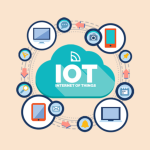The SaaS market is already worth 123 billion dollars in 2021 (according to Statista) and will keep growing. In this article, we’ll highlight the steps on how to build a saas product from start to finish and how to negotiate SaaS contracts afterward.
What is SaaS?
SaaS or Software as a Service is a way of delivering applications over the Internet. The application delivers a service to users so that instead of installing and maintaining software, it is accessed online and managed by a SaaS provider.
Building SaaS products can be complex or easy, depending on the solution you are developing.
5 Steps To Building a Saas Product
1. Market Analysis
First things first! Before you start building software as a service product, you have to find out whether there is a need for your product on the market or not. Decide which problems or needs you will solve for, who your target market will be, and whether or not there are other on-premise or online competitors you’ll have to face.
You will have to define all of the market requirements, scope the project and know what you are in for before you can build SaaS products that people will actually subscribe to!
2. Define Your Requirements
The SaaS cloud can perform a number of tasks, but each SaaS product has core functionalities. Decide which functionality and components best suit your concept, including:
- Multi-tenancy: Will each customer share an application instance and a single database?
- Self-service provisioning: Are you going to deliver a service through automation only?
- Security and Monitoring: Don’t forget that you have to plan for data encryption and application security, including identity management and access controls. Audit logs can track changes and prevent intrusion.
Decide which functionalities are core to the product and its integrity and which ones are nice to have before you build software as a service product.
3. Choose Your Pricing Strategy
The SaaS model varies from business to business, and you have to adapt accordingly. You can opt for a freemium model, monthly or annual subscription, and various pricing and feature tiers. You offer certain elements of your product for free or start users with a free trial; you’ll have to plan on converting free customers to paying clients sooner rather than later.
Most SaaS companies operate on monthly subscription fees, so make sure that you have a plan in place to retain customers from month to month.
4. Build Your Software Development Team
Your team requirements will depend on your tech stack (front-end, back-end, database, and hosting provider). You will need multiple developers and product managers, including:
- Front-end developers that work on JavaScript frameworks that meet SaaS requirements and have experience in React, Vue.js, or Angular;
- Back-end developers that build the core functionality of your product and use a framework like Node.js;
- Business analysts to keep track of your essential metrics;
- UX and Graphic designers that ensure your product is easy to use;
- Quality Assurance engineers;
- Project managers to oversee all operations.
While your first instinct may be to hire an in-house team, most start-ups simply can’t find a solid team within their budget. Freelancers are cheaper, but they require intense management and oversight.
Most start-ups opt for custom outsourcing software development agencies. With this model, you hire a remote team that provides high-quality services with no need to manage its work beyond normal project ownership and management. They take care of hiring and paying staff.
5. Building Your Minimum Viable Product
Your team will build a Minimum Viable Product (MVP) before launching it. It isn’t a fully functional product yet but has enough features to attract early users and test your concept. It solves your customers’ core problem and appeals to your target audience.
When you’ve built an MVP, you can collect feedback from your market and remove or add features accordingly. It’s also a great way to test various features to see if it appeals to your prospective users.
Conclusion
The SaaS model has a lot of potential, and building a winning product won’t be easy. Make sure that you follow the steps to building a SaaS product and find the best developers to help you make your dreams a reality.














